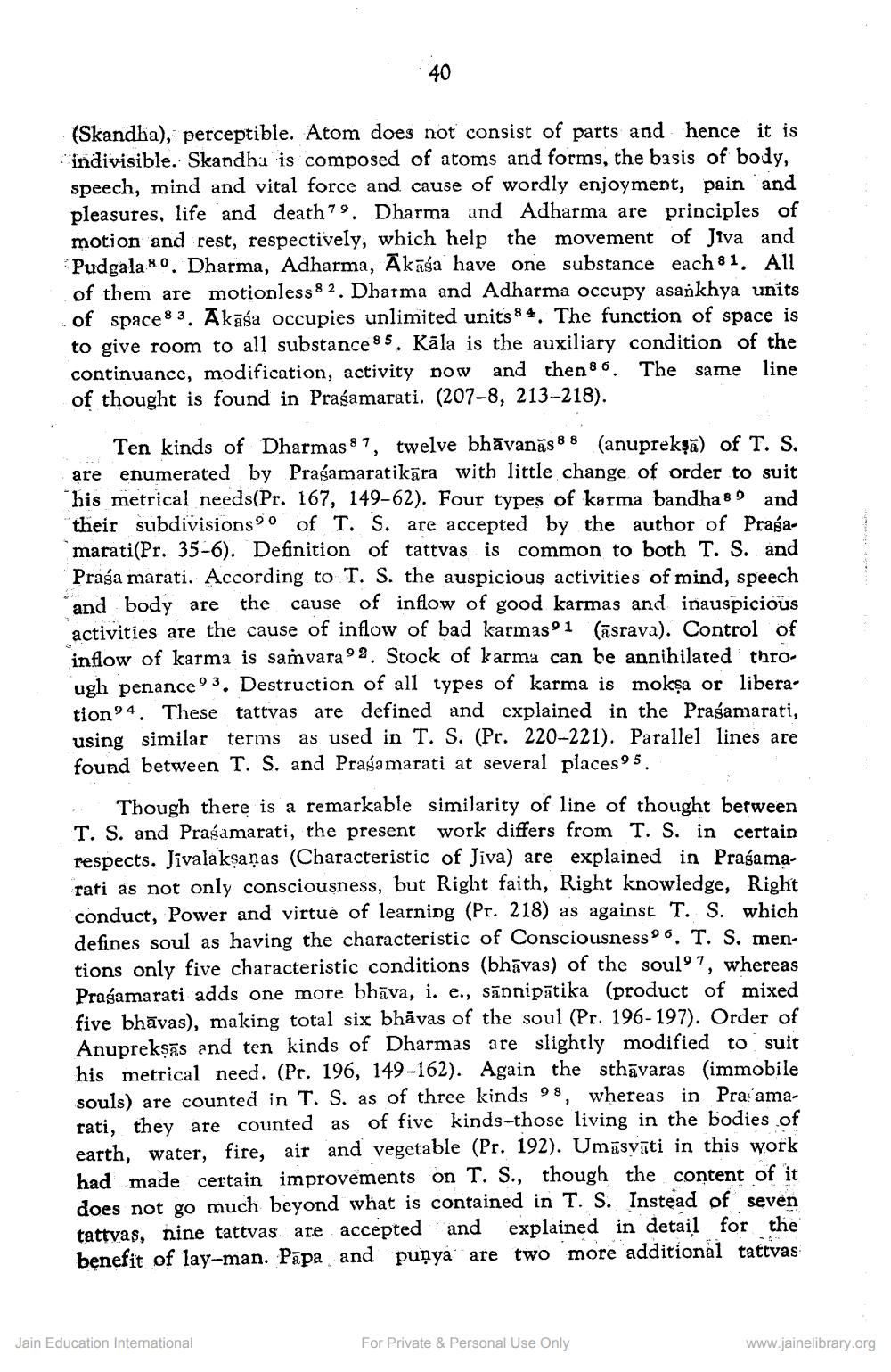________________
(Skandha), perceptible. Atom does not consist of parts and hence it is indivisible. Skandha is composed of atoms and forms, the basis of body, speech, mind and vital force and cause of wordly enjoyment, pain and pleasures, life and death 79. Dharma and Adharma are principles of motion and rest, respectively, which help the movement of Jiva and Pudgala 80. Dharma, Adharma, Ākāśa have one substance each 81. All of them are motionless 8 2. Dharma and Adharma occupy asankhya units of space 8 3. Akāśa occupies unlimited units 84. The function of space is to give room to all substance 85. Kāla is the auxiliary condition of the continuance, modification, activity now and then86. The same line of thought is found in Pragamarati. (207-8, 213-218).
Ten kinds of Dharmas 87, twelve bhāvanās 88 (anupreksä) of T. S. are enumerated by Prasamaratikāra with little change of order to suit his metrical needs(Pr. 167, 149-62). Four types of karma bandha 89 and their subdivisions of T. S. are accepted by the author of Pragamarati(Pr. 35-6). Definition of tattvas is common to both T. S. and Prasa marati. According to T. S. the auspicious activities of mind, speech and body are the cause of inflow of good karmas and inauspicious activities are the cause of inflow of bad karmasi (āsrava). Control of inflow of karma is samvarao2. Stock of karma can be annihilated through penance3. Destruction of all types of karma is moksa or liberation94. These tattvas are defined and explained in the Pragamarati, using similar terms as used in T. S. (Pr. 220-221). Parallel lines are found between T. S. and Prasa marati at several places 95.
. Though there is a remarkable similarity of line of thought between T. S. and Prasamarati, the present work differs from T. S. in certain respects. Jivalakṣaṇas (Characteristic of Jiva) are explained in Pragamarati as not only consciousness, but Right faith, Right knowledge, Right conduct, Power and virtue of learning (Pr. 218) as against T. S. which
ul as having the characteristic of Consciousness 9 6. T. S. mentions only five characteristic conditions (bhāvas) of the soul 97, whereas Pragamarati adds one more bhāva, i. e., sānnipātika (product of mixed five bhāvas), making total six bhāvas of the soul (Pr. 196-197). Order of Anupreksās and ten kinds of Dharmas are slightly modified to suit his metrical need. (Pr. 196, 149-162). Again the sthāvaras (immobile souls) are counted in T. S. as of three kinds 98, whereas in Pra'amarati, they are counted as of five kinds-those living in the bodies of earth, water, fire, air and vegetable (Pr. 192). Umāsvāti in this work had made certain improvements on T. S., though the content of it does not go much beyond what is contained in T. S. Instead of seven tattvas, nine tattvas are accepted and explained in detail for the benefit of lay-man. Papa and punya are two more additional tattvas
Jain Education International
For Private & Personal Use Only
www.jainelibrary.org




